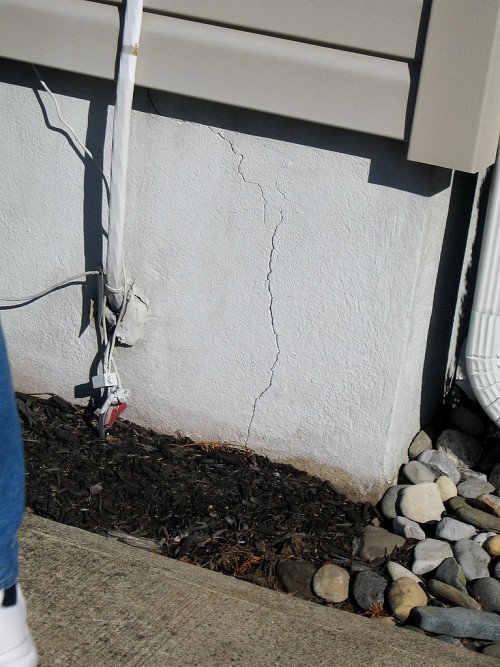Warning Signs Of Foundation Issues
Whether you’re hunting for a new home or trying to keep your current residence in good shape, you want a good solid foundation. That’s why it’s essential to be aware of the signs of foundation issues.
Keep in mind that the outward signs of foundation issues are just a symptom of a trouble source that needs to be taken care of. There’s quite a bit or variance in how serious (and expensive to fix) the underlying problem may be.
Here’s a general guide to warning signs of foundation issues. Before attempting repair – or making a decision whether or not to purchase a home – get onsite advice from a qualified building inspector, engineer, or local concrete contractor.
Cracks
Cracking is the most obvious red flag. While a foundation crack can be relatively minor, a result of the concrete curing process, home improvement guru Mike Holmes recommends professional inspection of any cracks wide enough to insert the edge of a dime (about 1/16”). If you’re unsure how serious these signs of foundation issues are, take a photo or stick a strip of tape at either end; check back in a few weeks to see whether they’ve grown.
Vertical crack. Although vertical cracking is usually the least problematic, two or more vertical cracks in a concrete foundation might indicate damage to the footing.
Horizontal crack. A horizontal crack at the foundation’s frost line (3-4 feet below grade) could be a signal of damage due to freeze-thaw cycles or pressure from groundwater and precipitation.
Diagonal crack. “Stair step” cracking in a cinder block or brick foundation wall can warn that the structure is in danger of collapsing, especially when the cracks appear near the corners. When the masonry itself is crumbling, find emergency professional repair.
A House that’s Literally Bent out of Shape
A house that has become lopsided is likely showing signs of foundation issues, caused by one of the following: improper design, incorrectly compacted soil before construction, soil movement, or overly damp soil due to plumbing leaks or inadequate drainage. Look for these trouble spots:
- Uneven, warped, or sagging floors.
- Doors and windows that are suddenly hard to open or close.
- Bulging or bowed walls.
- Trim that is separating at its corners.
- A tilting chimney.
Moisture
Excessive moisture is the homeowners’ nightmare. Keep an eye out for any indication that your foundation might be affected by water in varying amounts.
Puddles along the foundation outdoors. These often show that water is not draining away properly. In some cases, they’re easily fixed. Clear your gutters, so they don’t overflow onto the foundation. Check that downspouts are long enough to direct water a safe distance from your home. And ensure that soil is graded to slant downward, away from the house.
Puddles inside the basement. Excess water that has pooled under the foundation may seep through and form puddles indoors.
Damp, musty air. Sometimes, you won’t see actual puddles but you’ll still get some very good clues that there is too much moisture around your foundation --- usually via damp, musty-smelling indoor air or mold growth.
Tips
- Before buying a home, read the seller’s disclosure, which reveals any known latent threats to your health and safety as a future resident. This includes previous foundation problems, such as flooding or mold. Any completed mitigation should be documented in writing.
- Also, as a potential buyer, have the house checked by a qualified building inspector, who should look at both the exterior and the interior of the foundation. Beware a basement crammed with boxes; they may be hiding signs of foundation issues. Don’t expect your inspector to investigate behind them; moving furniture or other items is not his job.
- Find out your local requirements for residential foundation repair. You (or your contractor) may need to pull a permit and/or arrange for an engineer’s report.
- Foundation repair may be as simple as filling a crack with epoxy. However in complex cases, you may need more extensive work, such as installing French drains or reconstructing the foundation. Whatever repair is done, ensure that the issue is resolved at its source.
Laura Firszt writes for networx.com.
Looking for a Pro? Call us (866) 441-6648

Average Costs
Related Experiences

I Built A Concrete Retaining Wall As A Defense Against El Nino

Our New Concrete Sidewalk Is Just What We Were Hoping For




